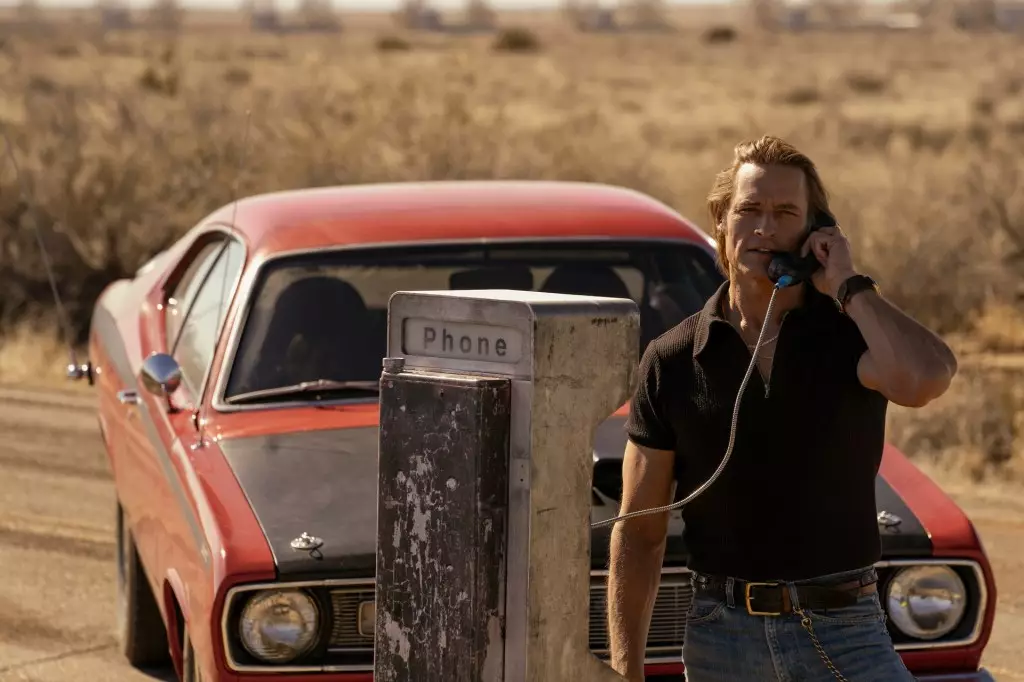The recent cancellation of HBO Max’s “Duster” after its inaugural season reveals more than just a fleeting TV run; it exposes a wider issue in today’s streaming landscape — the challenge of translating critical acclaim and initial viewer interest into sustained success. Despite achieving high critic ratings (92%) and favorable audience feedback (83%), the series failed to penetrate mainstream streaming metrics sufficiently to warrant continuation. This disconnect begs the question: why do quality shows like “Duster” struggle to find their audience beyond niche circles?
This predicament is especially perplexing considering the creative pedigree behind the show. J.J. Abrams, a storyteller renowned for meticulous craftsmanship, teamed up with LaToya Morgan to craft a crime drama set in the gritty, atmospheric 1970s Southwest. The series’ premise, with a Black female FBI agent breaking new ground in her field and a daring getaway driver working to dismantle a crime syndicate, signals both social relevance and compelling storytelling potential. Yet, despite these strengths, “Duster” did not reach the critical mass needed to sustain a second season. The disparity between critical acclaim and streaming performance underscores how algorithms and viewer habits can sideline even the most promising projects.
Limitations of the Streaming Model & Audience Engagement
One cannot ignore the structural limitations inherent in the current streaming ecosystem. HBO Max’s decision not to continue “Duster” illustrates the harsh reality that streaming services prioritize viewership metrics and engagement over critical praise. While the show remained in the daily Top 10 on HBO Max, it never entered Nielsen’s Top 10 for streaming originals or made a significant dent in Luminate’s Top 50 list. The gap between quality and visibility is symptomatic of a broader issue: the crowded, algorithm-driven nature of streaming platforms tends to favor series with immediate, mass appeal over nuanced narratives that may require patience and deeper engagement.
Furthermore, the platform’s commercial priorities marginalize niche shows, regardless of their artistic merit. “Duster” was quietly shopped to other platforms, an acknowledgment of this reality, but failed to secure another home. This underscores a notable failure within the industry: the inability, or unwillingness, of the streaming giants to champion diverse, bold content that challenges conventions. Such shows often suffer from underpromotion and misaligned marketing strategies that don’t do justice to their potential, thus limiting their chances of success.
Unrealized Potential and the Future of Genre-Driven Stories
From a storytelling standpoint, “Duster” represented a unique blend of genre and social commentary. Set in the 1970s, it drew viewers into a richly textured world that combined action, suspense, and cultural history. The focus on Nina, the pioneering Black FBI agent, added layers of relevance beyond its era — a narrative that champions representation and resilience. The casting of Josh Holloway, known for his work on “Lost,” alongside an excellent ensemble cast, created a foundation ripe for expansion.
It’s evident that the lack of continuation is a loss to the genre. Shows like “Duster” serve as vital vessels for elevating underrepresented voices in complex stories that combine entertainment with societal reflection. The decision not to proceed diminishes the opportunity for viewers to explore nuanced characters navigating a turbulent era, a storytelling approach that could have gained momentum with strategic promotion and a broader viewership base.
The failure may also reflect a missed opportunity to leverage the current cultural appetite for stories centered on racial and social justice issues, set against the compelling backdrop of crime and noir. As streaming platforms become more segmented, there is a clear necessity for bold, risk-taking series that challenge existing norms and provoke dialogues beyond simple entertainment. “Duster” had the potential to be such a series, yet it was left to fade in a landscape that rewards quick wins over long-term investment in authentic storytelling.
A Call for Purposeful Content and Strategic Support
The story of “Duster” is not just about a canceled series; it’s about the industry’s need to rethink how it cultivates and sustains innovative narratives. If quality alone determined a show’s future, “Duster” would have been greenlit for multiple seasons. Instead, success metrics seem narrowly defined by immediate viewer numbers and streaming rankings. This approach discourages creators from pursuing unconventional stories that might take time to build a following.
Moving forward, there’s an urgent need for platforms to reevaluate their approach. Supporting series with cultural depth, bold storytelling, and authentic representation can foster loyalty and long-term engagement among diverse audiences. The industry has an obligation to foster an environment where innovative series like “Duster” can flourish, not just survive momentarily.
The potential of “Duster” was never fully realized, but it opens a broader conversation about the kind of stories we value and support. Perhaps the real victory is not in a second season but in recognizing that such series deserve a platform and a dedicated audience willing to explore their compelling worlds. If the industry is genuinely committed to progress, it must learn to prioritize quality and storytelling bravery over immediate metrics alone.
